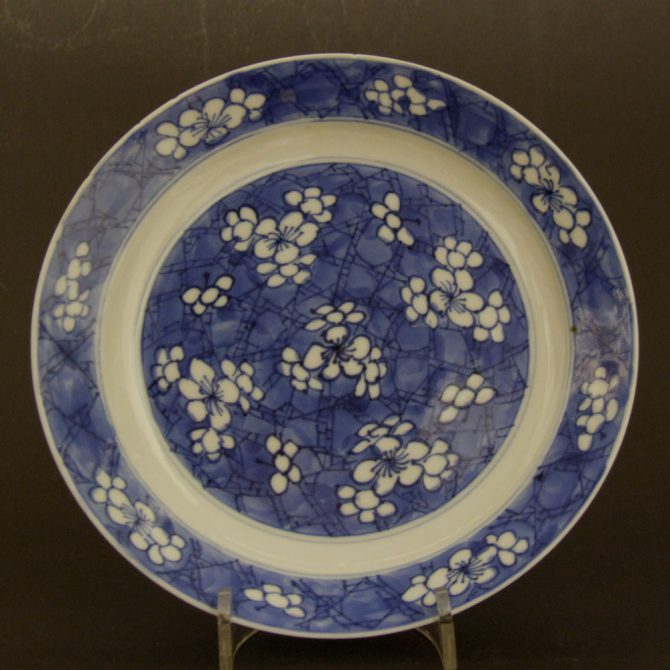
KANGXI 1662 – 1722 Chinese Export Porcelain
A Small Kangxi Blue and White Porcelain Plate c.1700. Decorated with Plum Blossom Against a Cracked Ice Ground. The Reverse with Emblems from the Bajixiang (Eight Buddhist Treasures).
SOLD
- Condition
- Very good, some minute glaze chips.
- Size
- Diameter : 15.8 cm (6 1/4 inches)
- Provenance
- From a Private Belgium Collection of Chinese and Japanese Ceramics and Works of Art. References : For a Chinese export porcelain plate of this size and design recovered from a Kangxi shipwreck and are published in : Donghai Pingtan Wanjiao Yihao Chushui Ciqi (Ceramics Recovered from the No. 1 Wreck on the Wanjiao Reef Near Pingtan on the East China Sea, Published in Beijing 2006) page 125, plate 54.
- Stock number
- 22926
Information
Plum and Cracked-Ice :
Plum Meihua is one of the most important plants in Chinese art. Their flowers grow on knurled old angular branches, the flowers are fragile and pure, so they can be a symbol of vigour in old age as well as purity. The tree is the first to flower after the long hard winter, symbolically it can represent perseverance as well as renewal. This meaning is enhanced by a background of cracked-ice, the design can be seen as representing the end of winter and the beginning of spring with the ice of winter cracking to reveal a new year dawning. Branches of plum blossom convey the `Five Blessings` Meikai wufu, longevity, wealth, health, love of virtue and a peaceful death. The number five, an auspicious number to the Chinese, is taken from the five petals of the plum flower. The design is shown as single plum blossom flowers scattered over cracked-ice or flowering plum blossom branches against the cracked surface of the ice. Jars, especially the so-called ginger-jars or Hawthorn jars , decorated with this design were very popular in England during the end of the 19th and the early years of the 20th century. Kangxi blue and white porcelain in general was highly sought at the time. It was made famous by the artist Whistler among others, and became a symbol of the Aesthetic movement. Prices for this type of Chinese blue and white porcelain, in real terms, reached far more than it would do today.
